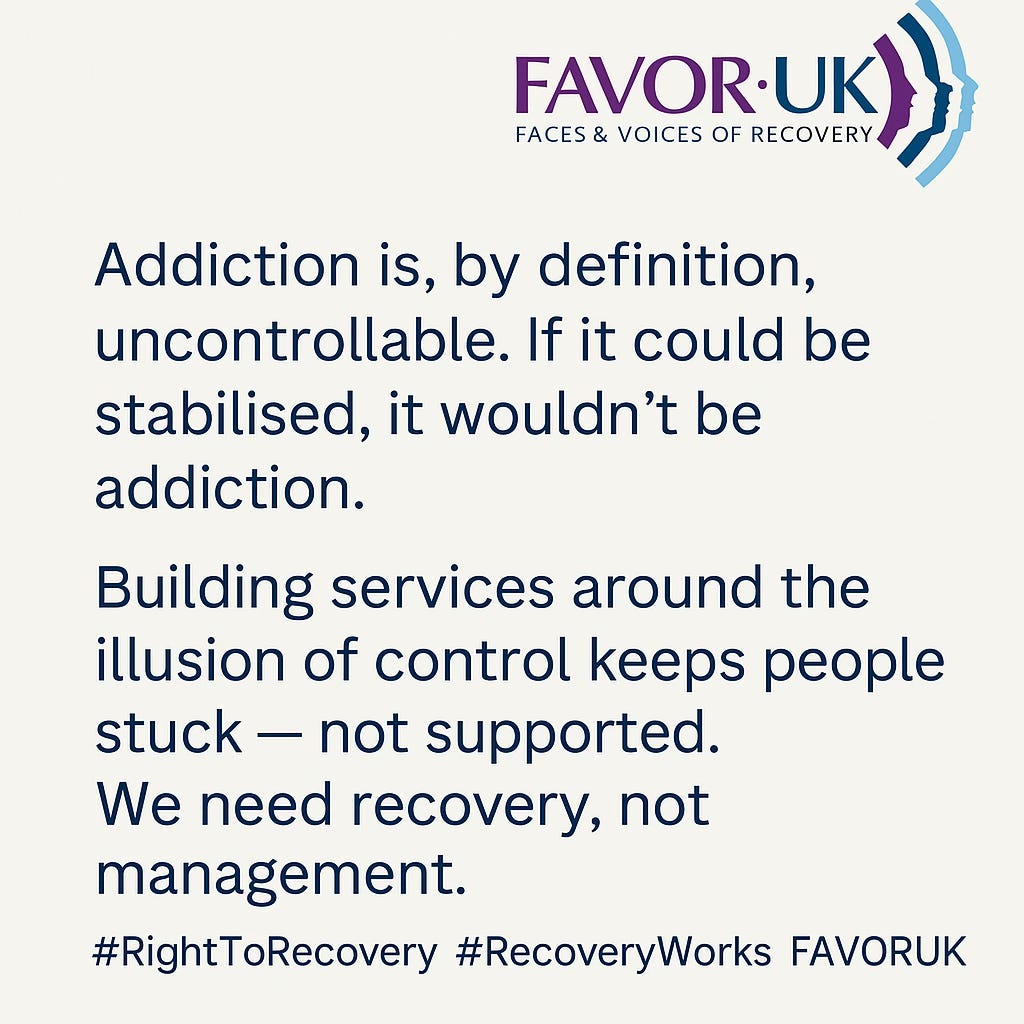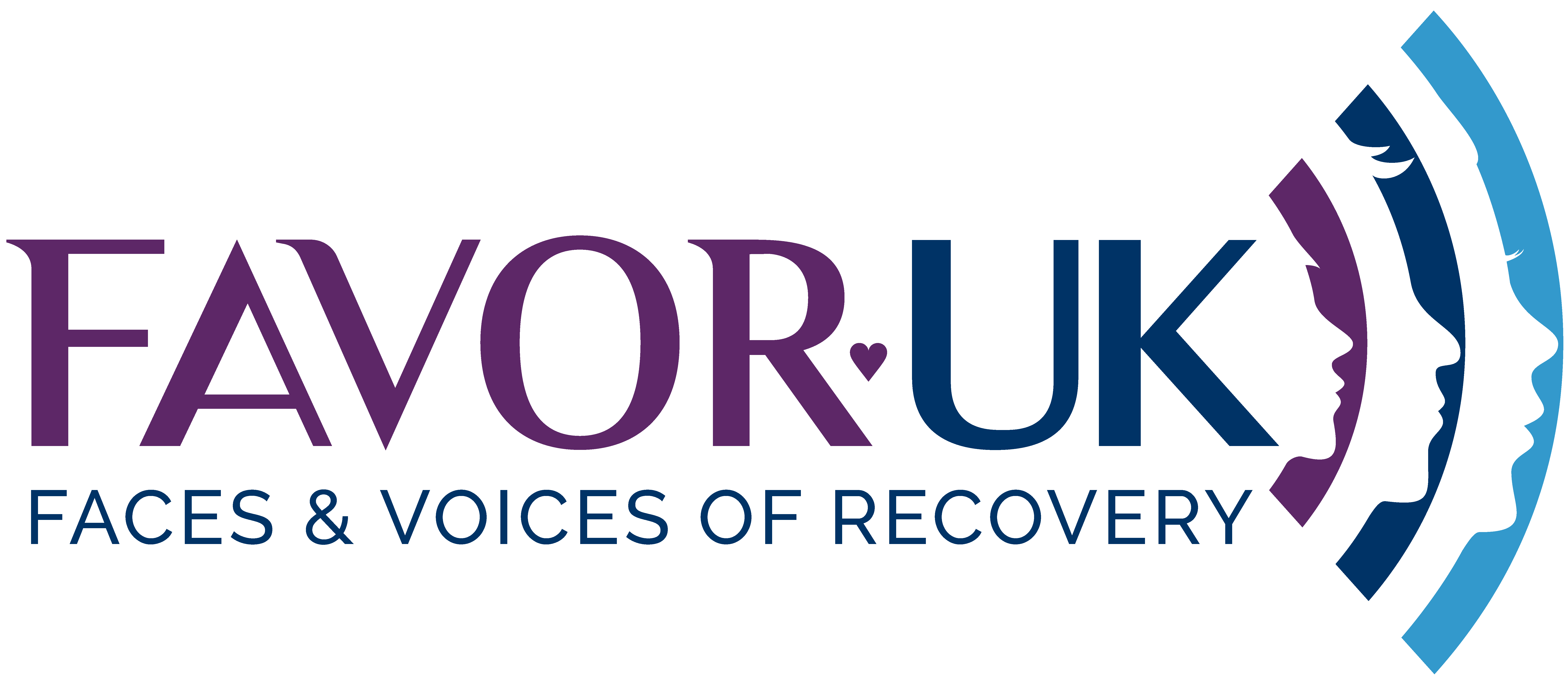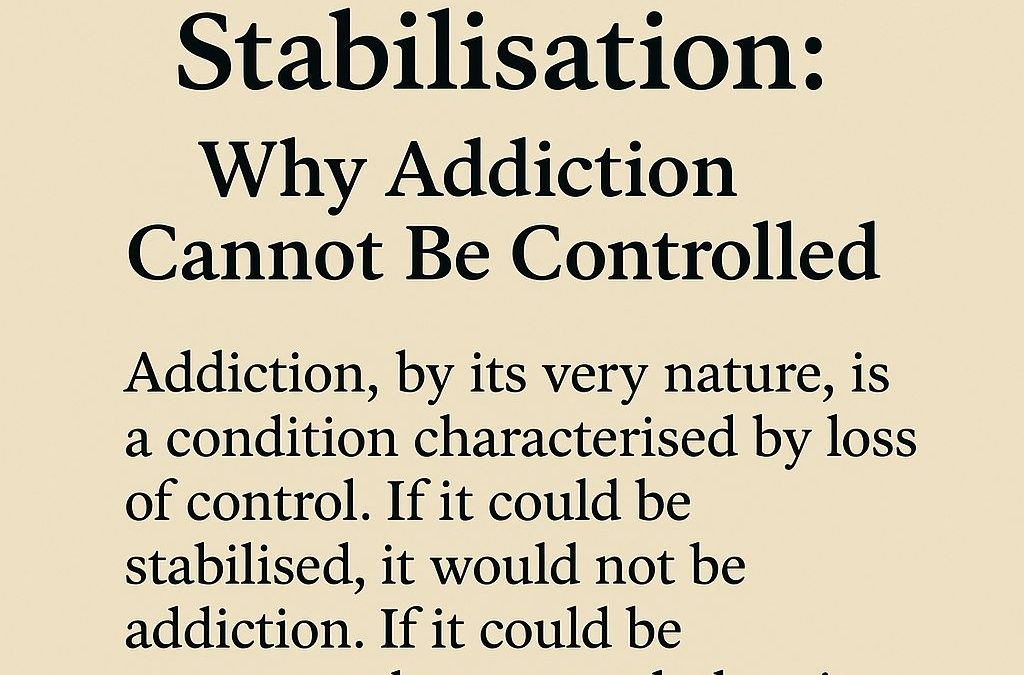Why Addiction Cannot Be Controlled
APR 05, 2025
In recent years, the language of “stabilisation” has become embedded in the discourse around addiction treatment. On the surface, it appears to be a pragmatic and compassionate approach, helping individuals “manage” their condition, particularly where abstinence feels out of reach. But this concept, when applied to the reality of addiction, is both flawed and deeply misleading.
Let us be absolutely clear: addiction is defined by the inability to control use. If a substance use disorder could be stabilised indefinitely, it would not be addiction. It would be something else entirely.
Addiction as a Progressive Condition
Addiction is not simply excessive substance use. It is a chronic, relapsing condition that fundamentally alters the brain’s reward and decision-making systems, leading to compulsion, obsession, and a loss of control (Volkow et al., 2016). According to the Advisory Council on the Misuse of Drugs (ACMD), addiction is “a chronic relapsing disorder characterised by compulsive drug-seeking, continued use despite harmful consequences, and long-lasting changes in the brain” (ACMD, 2016).
The very nature of addiction is progressive. Left untreated, it tends to worsen — moving from early misuse to dependency and, eventually, to a crisis point. To suggest that addiction can be safely “stabilised” is to fundamentally misunderstand its nature.
Why Stabilisation Appeals to Systems
The concept of stabilisation appeals not because it works, but because it is administratively and politically convenient. In an overstretched system, stabilising people through long-term prescribing (e.g. methadone or buprenorphine), offering basic harm reduction, and providing minimal contact becomes a form of passive care. It is cheaper in the short term and easier to measure.
While harm reduction approaches, such as substitute medication, naloxone distribution, injecting equipment have a role to play in reducing mortality (Strang et al., 2020), they are not recovery in and of themselves. These interventions are designed to buy time, not resolve the underlying disorder.
The UK Government’s 10-year drug strategy, From Harm to Hope, rightly states that recovery is “about abstinence, improved health, employment, and rebuilding relationships” (HM Government, 2021). Yet services too often stall at the stabilisation stage, leaving people indefinitely in “managed” addiction rather than supporting them into long-term recovery.
Stabilisation Is Not Recovery
Recovery is dynamic, not static. It requires behavioural change, psychological healing, community reintegration, and, for many, abstinence. Recovery is about regaining control, not remaining under perpetual management.
As White (2007) argued, recovery should be viewed as “a lived experience of improved quality of life and a sense of empowerment, not simply the removal of symptoms.” When stabilisation becomes the end goal, we entrench people in a system that expects little, offers little, and delivers little.
In practice, this leads to low expectations. Individuals are maintained, not motivated. Risk is avoided, but so is growth. And tragically, many are never offered the chance to try abstinence-based services or residential rehabilitation. In Scotland, in particular access to these options remains inconsistent and underfunded, despite evidence of their efficacy (Best et al., 2010).

Addiction Cannot Be Contained
Perhaps the most dangerous idea in the stabilisation narrative is the belief that addiction can be “managed” like a chronic condition such as diabetes or hypertension. But addiction is different. It is not a static or stable disorder. It evolves. It migrates from one substance to another. It morphs into behavioural addictions. It leads to social decline, health collapse, and early death.
There is no clinical basis for believing that someone can remain “safely addicted” over the long term. The risk of overdose, relapse, or deterioration is always present. Even long-term substitution therapy, while initially beneficial for some, carries significant risks when not paired with psychosocial support, peer connection, and structured exit plans. Without these elements, the initial benefits tend to wear off over time, and individuals can become trapped in a cycle of dependency rather than progressing toward recovery (NICE, 2022; Strang et al., 2015).
Recovery Requires Investment and Belief
Scotland’s Right to Addiction Recovery Bill seeks to create a legal right to access a full spectrum of treatments, including abstinence-based options and residential rehabilitation. This represents a critical shift away from the passive care model(Scottish Parliament, 2024).
If passed, the Bill would ensure that individuals are not simply stabilised and forgotten, but actively supported to reclaim their lives — with the dignity of choice and the hope of change.
Stop Settling for daily Survival
It is time to confront a hard truth: if addiction could be stabilised indefinitely, it wouldn’t be addiction. What is often called “stabilisation” is, in many cases, just slow deterioration in disguise, being kept alive just to score and perhaps overdose again tomorrow is not ethical.
If we truly want change, we need leaders who understand addiction not as a policy problem to be managed, but as a complex, human crisis that demands unwavering commitment to recovery pathways that work. Until then, this cycle of ineffective policy and political posturing will tragically keep us on this path of escalating loss and suffering.
Addiction demands bold responses, not bureaucratic compromises. Recovery is possible, but only when we stop confusing the delusion of containment with actual care.
References
Advisory Council on the Misuse of Drugs (ACMD), 2016. Reducing opioid-related deaths in the UK. [online] Available at: https://www.gov.uk/government/publications/reducing-opioid-related-deaths-in-the-uk [Accessed 5 Apr. 2025].
Best, D., Rome, A., Hanning, K.A., White, W., Gossop, M., Taylor, A. and Perkins, A., 2010. Research for recovery: A review of the drugs evidence base. Scottish Government Social Research. [online] Available at: https://www.gov.scot/publications/research-recovery-review-drugs-evidence-base/ [Accessed 5 Apr. 2025].
HM Government, 2021. From Harm to Hope: A 10-Year Drugs Plan to Cut Crime and Save Lives. [online] Available at: https://www.gov.uk/government/publications/from-harm-to-hope-a-10-year-drugs-plan-to-cut-crime-and-save-lives[Accessed 5 Apr. 2025].
National Institute for Health and Care Excellence (NICE), 2022. Drug misuse prevention: targeted interventions. [online] Available at: https://www.nice.org.uk/guidance/ng64 [Accessed 5 Apr. 2025].
Scottish Parliament, 2024. Right to Addiction Recovery (Scotland) Bill. [online] Available at: https://www.parliament.scot/bills-and-laws/bills/right-to-addiction-recovery-scotland-bill [Accessed 5 Apr. 2025].
Strang, J., McDonald, R., Alqurshi, A. and Taylor, D., 2020. Naloxone for opioid overdose: new guidance from the UK’s Advisory Council on the Misuse of Drugs. BMJ, 371, p.m4507. https://doi.org/10.1136/bmj.m4507
National Institute for Health and Care Excellence (NICE), 2022. Methadone and buprenorphine for the management of opioid dependence. [online] NICE. Available at: https://www.nice.org.uk/guidance/ta114 [Accessed 5 Apr. 2025].
Strang, J., McDonald, R. and Taylor, D., 2015. Addiction: from brain disease to social recovery? The Lancet, 386(9999), pp.403–404. https://doi.org/10.1016/S0140-6736(15)61302-5
Volkow, N.D., Koob, G.F., and McLellan, A.T., 2016. Neurobiologic Advances from the Brain Disease Model of Addiction. New England Journal of Medicine, 374(4), pp.363–371. https://doi.org/10.1056/NEJMra1511480
White, W.L., 2007. Addiction recovery: Its definition and conceptual boundaries. Journal of Substance Abuse Treatment, 33(3), pp.229–241. https://doi.org/10.1016/j.jsat.2007.04.015

